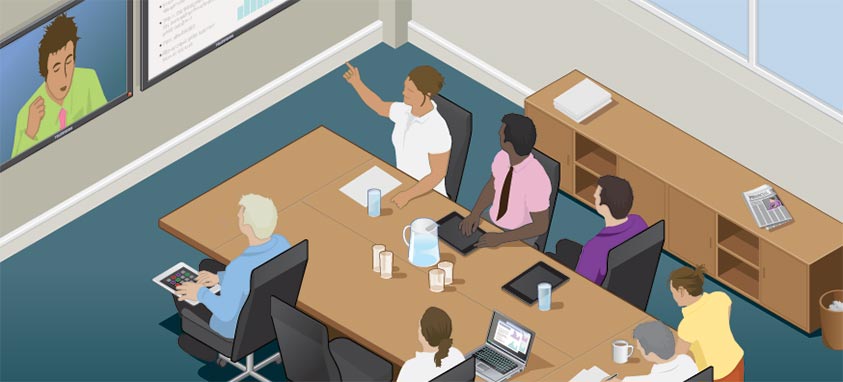Strategy and preparation can extend reach and boost ROI
In the past several years, the potential value of meetings has gone up significantly due to the ability to conduct them in a hybrid manner. But what exactly does hybrid mean? In short, a hybrid meeting involves an in-person audience, as well as a remote audience connected via video and audio technology.
While networking and other benefits of an in-person event are preserved, the cost is lower. There’s also the ability to involve people for whom only part of the meeting’s content is relevant; they wouldn’t have traveled to the meeting site, but now they can benefit from the meeting nonetheless. Between the cost savings and productivity gains, hybrid meetings can generate a very strong return on investment, even after factoring in the additional cost of necessary technology.
Stephanie Pfeilsticker, president of Hybrid Events Authority in Minneapolis, notes that many franchise meetings and association events she’s worked on end up converting about 40 percent of virtual attendees to in-person attendees the following year.
Coordinate Content
Planners must account for several things to ensure success when coordinating hybrid events. The starting point is content. As you create an outline of topics and sessions, determine which audiences will participate in which sessions. It’s critical to know when the virtual audience will be connected versus when the in-person meeting(s) will independently conduct small-group discussions, role-playing, team building and other interpersonal exercises. This allows you to begin consultations with technology suppliers who assist in building the event.
The technology team should include a virtual platform and streaming company (these can be found in every sizable city), as well as the venue’s AV department or an outside production company.
“Reps from these companies should be on all your conference calls in the months and weeks ahead of the event, and then at your precon meeting onsite,” Pfeilsticker says. “I wouldn’t hold any progress meetings without these people; they all need to be on the same page.” She says this is especially the case when it comes to the most technical aspects of setup such as using wired Internet with redundancy and having specific ports open for signal transmission.
Develop a Crisis Plan
Parties must devise a crisis plan that covers “every last thing that could go wrong with the technology, and lists solutions or workarounds for each potential problem,” Pfeilsticker says. “This makes any onsite complication much easier to deal with.”
On the day before a hybrid event takes place, these suppliers should join the meeting hosts at the venue for final tweaks and test runs.
“It’s not only about the equipment, the lighting and the cameras, and whether the audio and video feeds are going out properly,” Pfeilsticker says. “It’s also about having clear communication between the tech people and the session leaders so there is no confusion in front of the audience. Having a few hours together can make a huge difference in quality.”
Along with these technical aspects, vendors can assist with how to best deliver content and keep all attendees engaged. “Ask them about the setups used by clients who had event objectives similar to yours,” Pfeilsticker says. “Planners should definitely rely on the platform and streaming company to present ideas based on what they’ve seen before.”
Stimulate Engagement
Besides coaching onsite speakers and moderators to address the cameras as often as they address the in-person audience, planners should understand and use interactive tools and apps that platform and streaming companies offer.
“You must put a lot of time into structuring engagement or else you’ll lose your remote audience pretty quickly,” Pfeilsticker says. “There are apps available that can combine moderated real-time chat forums, polling and question-asking capability for virtual attendees, while in-person attendees can simply use their smartphones.”
Session scheduling is another element that’s critical to keeping virtual attendees tuned in.
With completely virtual events such as webcasts, it’s a best practice to change the topic or format every 20 minutes to keep it fresh. There are a few tactics that can delay fatigue virtual attendees might encounter during a 45-to-60-minute session, including opting for a talk-show-host format rather than a typical presentation, so that a lone speaker won’t bore the virtual audience.
Moderators of various electronic chat forums can seed those forums with related facts, statistics, Web links and questions for the remote audience to consider throughout the session. And once the session ends and the in-person audience goes to break, the session’s presenter can focus exclusively on the remote audience, giving participants a 15-minute window to ask questions and share their opinions.
Pfeilsticker recently coordinated a national sales meeting in which 1,000 people attended in person and another 450 attended remotely for 2 1/2 days.
“Besides having a great mix of content, we had to put a lot of engagement tactics in there to keep the virtual people paying attention,” Pfeilsticker says. “If you have the content they want, they will watch.”




